#TakeCharge with #Aimshala
How make a career in Art Economist
A career as an Art Economist offers a unique opportunity to bridge the gap between the arts and economic principles. Art Economists analyze the economic aspects of the art market, including pricing, investment potential, and the impact of cultural policies. To pursue this career, individuals typically need a strong academic background in economics, art history, or a related field. A bachelor's degree is essential, followed by potential specialization through master's or doctoral programs in art economics or cultural economics. Gaining practical experience through internships at galleries, museums, or cultural institutions enhances employability. Networking with professionals in the field and staying updated with market trends and cultural policies are also crucial. With a blend of education, experience, and passion for the arts, one can build a rewarding career dedicated to the economic analysis of art.
Career in Art Economist
What are the roles and responsibilities in Art Economist?
- Conducting Market Research : Art Economists conduct research on art market trends, pricing, and consumer behavior to provide insights for galleries and collectors.
- Data Analysis : They analyze data related to art sales, auction results, and economic indicators to draw conclusions and make recommendations.
- Advising Stakeholders : Art Economists provide guidance to collectors, galleries, and institutions on investment strategies and market opportunities.
- Developing Economic Models : They create models to predict market trends and assess the economic impact of cultural policies on the art sector.
- Teaching and Outreach : Many Art Economists engage in educational outreach, teaching students and professionals about the economics of art and cultural policy.
What education is required to study Art Economist
Check out the dates of the total number of candidates who have appeared in the CUET 2022 exam from the below table.
Stream |
Graduation |
After Graduation |
After Post Graduation |
|
|
Path 1 |
Completion of high school with a focus on economics, art, and social sciences. |
Bachelor of Arts in Economics, Art History, or a related field. |
Master's degree in Art Economics, Cultural Economics, or related fields. |
Ph.D. in Art Economics for those pursuing research or academic careers. |
|
Path 2 |
Completion of high school with emphasis on arts and humanities. |
Bachelor's degree in Arts Management or Cultural Studies. |
Master's degree in Arts Management or Cultural Policy. |
Certifications in art market analysis or cultural policy. |

Feeling unsure about
your future?
Let's find the perfect career path for you!
with AI-powered career
guidance

What are the key skills required for Art Economist
- Analytical Skills - These skills are crucial for interpreting market data and making informed economic decisions regarding art investments.
- Communication Skills - Effective communication is vital for sharing research results with stakeholders, galleries, and the academic community.
- Problem-Solving Skills - The ability to identify issues in the art market and develop innovative solutions is essential for success.
- Technical Skills - Proficiency with data analysis tools and economic modeling software is important for conducting research.
- Project Management Skills - Managing research projects efficiently, including budgeting and timelines, is key to successful outcomes in art economics.
What are the career opportunities in Art Economist?
- Art Market Analyst - Art Market Analysts specialize in evaluating art market trends and providing insights for investors and collectors.
- Cultural Policy Advisor - Cultural Policy Advisors work with governments and institutions to develop policies that support the arts and cultural sectors.
- Museum Curator - Museum Curators manage collections and exhibitions, integrating economic insights into their programming.
- Gallery Manager - Gallery Managers oversee operations and sales in art galleries, leveraging economic knowledge to enhance profitability.
- Arts Consultant - Arts Consultants provide strategic advice to organizations on funding, marketing, and economic sustainability.
What is the salary and demand for Art Economist?
- Salary Overview - The typical salary for Art Economists ranges from $45,000 for entry-level positions to over $90,000 for experienced professionals, with variations based on education and location.
- Regional Salary Variations - Salaries can vary significantly by region; for example, Art Economists in major urban centers may earn more than those in smaller towns.
- Current Job Market Demand - The demand for Art Economists is growing due to an increasing interest in the economic aspects of the art market and cultural investment.
- Future Demand Projections - Future demand for Art Economists is expected to rise as the art market continues to evolve and the importance of cultural economics becomes more recognized.
Leading companies for careers in Art Economist

Christie's

Sotheby's

Artnet

Art Basel

The Art Institute of Chicago

The Getty

The Museum of Modern Art (MoMA)

The Tate
What are the best colleges for Art Economist in India?
Undergraduate
College |
Location |
Website |
|
National Institute of Design |
Ahmedabad |
https://www.nid.edu |
|
Jamia Millia Islamia |
New Delhi |
https://www.jmi.ac.in |
|
Shri Ram College of Commerce |
New Delhi |
https://www.srcc.edu |
|
University of Mumbai |
Mumbai |
https://www.mu.ac.in |
|
Symbiosis School of Arts and Commerce |
Pune |
https://www.ssac.edu.in |
Postgraduate
College |
Location |
Website |
|
National Institute of Design |
Ahmedabad |
https://www.nid.edu |
|
Jamia Millia Islamia |
New Delhi |
https://www.jmi.ac.in |
|
Tata Institute of Social Sciences |
Mumbai |
https://www.tiss.edu |
|
Indian Institute of Management Bangalore |
Bangalore |
https://www.iimb.ac.in |
|
National School of Drama |
New Delhi |
https://www.nsd.gov.in |
What are the best colleges for Art Economist in Abroad?
College |
Location |
Website |
|
Harvard University |
Cambridge, Massachusetts, USA |
https://www.harvard.edu |
|
Columbia University |
New York, USA |
https://www.columbia.edu |
|
London School of Economics |
London, United Kingdom |
https://www.lse.ac.uk |
|
University of Chicago |
Chicago, Illinois, USA |
https://www.uchicago.edu |
|
University of California, Berkeley |
Berkeley, California, USA |
https://www.berkeley.edu |
What are the top entrance exams in India for pursuing a career in Art Economist
College |
Tentative Date |
UG/PG |
Important Elements |
Website |
|
Jamia Millia Islamia |
May |
Postgraduate |
Economics, Art History, and General Knowledge. |
https://www.jmi.ac.in |
|
Tata Institute of Social Sciences |
June |
Postgraduate |
Social Sciences, Research Methodology, and Analytical Skills. |
https://www.tiss.edu |
|
National Institute of Design |
April |
Postgraduate |
Design Principles, Art History, and General Knowledge. |
https://www.nid.edu |
|
University of California, Berkeley |
January |
Postgraduate |
Economics, Art Theory, and Analytical Skills. |
https://www.berkeley.edu |
|
London School of Economics |
June |
Postgraduate |
Economics, Cultural Studies, and Research Skills. |
https://www.lse.ac.uk |
Pros & Cons of a Career in Art Economist
Pros
- Art Economists play a crucial role in understanding and enhancing the economic value of art, making their work impactful and fulfilling.
- The field offers competitive salaries, especially for those with advanced degrees and specialized skills in economics and art.
- Professionals in this field contribute positively to cultural sustainability and the promotion of the arts through informed economic analysis.
- The career provides opportunities for continuous learning and networking within the vibrant art community.
Cons
- The job can be demanding with long hours, especially when conducting research or during major art events.
- Some roles may require extensive travel to art fairs, auctions, and cultural sites, which can be physically taxing.
- Funding uncertainties in cultural projects can lead to job instability or limited resources for research.
- The work can sometimes be isolating, especially for those engaged in extensive research away from collaborative environments.
Did you find this information helpful?


Report
0 out of 0 found this helpful


